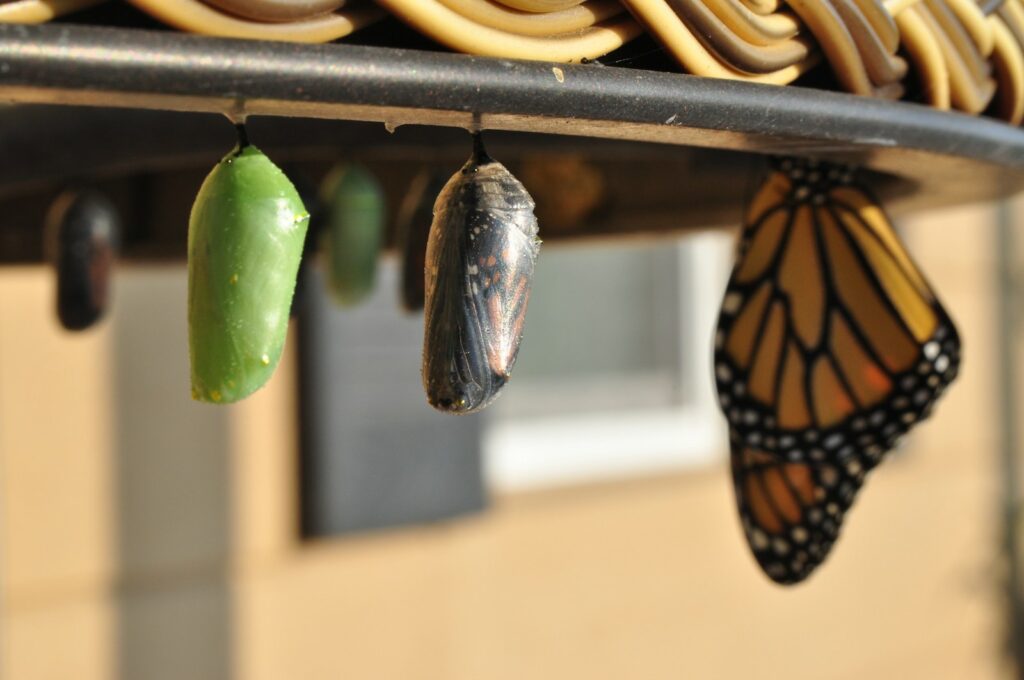In the intricate theater of nature, some of the most fascinating performances occur within the tiny worlds of insects. Among these spectacles is the remarkable phenomenon of insect pupae that appear dead for extended periods, sometimes months, before dramatically emerging as adults. This period of suspended animation, known scientifically as diapause, represents one of nature’s most effective survival strategies. Far from being truly dead, these insects are merely pausing their development in response to environmental cues, essentially “playing possum” on a metabolic level. This article explores the fascinating world of these deceptive developers, examining how and why certain insects evolved this remarkable ability to fake death before their grand transformation.
Understanding Pupal Diapause: Nature’s Pause Button

Pupal diapause is a physiologically programmed state of dormancy that many insects enter during their pupal stage, appearing completely lifeless to the outside world. During this period, metabolic processes slow dramatically, sometimes to less than 10% of normal rates, creating a convincing illusion of death. Unlike simple rest or sleep, diapause involves complex hormonal changes that essentially halt development at a specific point, allowing the insect to survive unfavorable conditions such as extreme temperatures, drought, or food scarcity. Some species, like certain moths and butterflies, can remain in this suspended state for six months or longer, with some exceptional cases lasting years. This remarkable adaptation allows these insects to synchronize their emergence with optimal environmental conditions, ensuring better chances of survival and reproduction.
The Evolutionary Advantages of Playing Dead
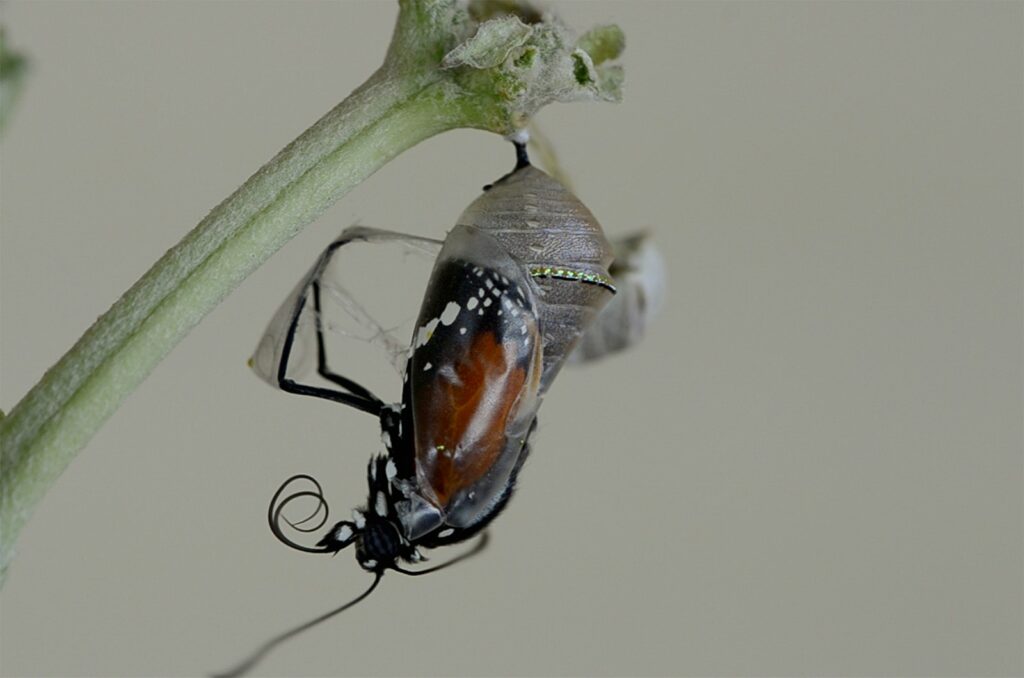
The ability to enter diapause offers numerous survival benefits that explain why this trait has evolved independently in many insect lineages. Perhaps most importantly, it allows insects to weather seasonal extremes by essentially “time traveling” through periods when they would otherwise perish. For example, many temperate-zone insects enter diapause to avoid winter conditions that would be lethal to active individuals. Additionally, this dormant state serves as excellent protection against predators, as the immobile pupae appear lifeless and often develop tough, camouflaged exteriors that blend into their surroundings. The synchronized emergence that follows diapause creates safety in numbers, as predators become overwhelmed by the sudden abundance of prey. Finally, diapause ensures that adult insects emerge when environmental conditions favor reproduction, with plentiful food sources and appropriate weather for finding mates and laying eggs.
The Biochemistry Behind the Death Facade
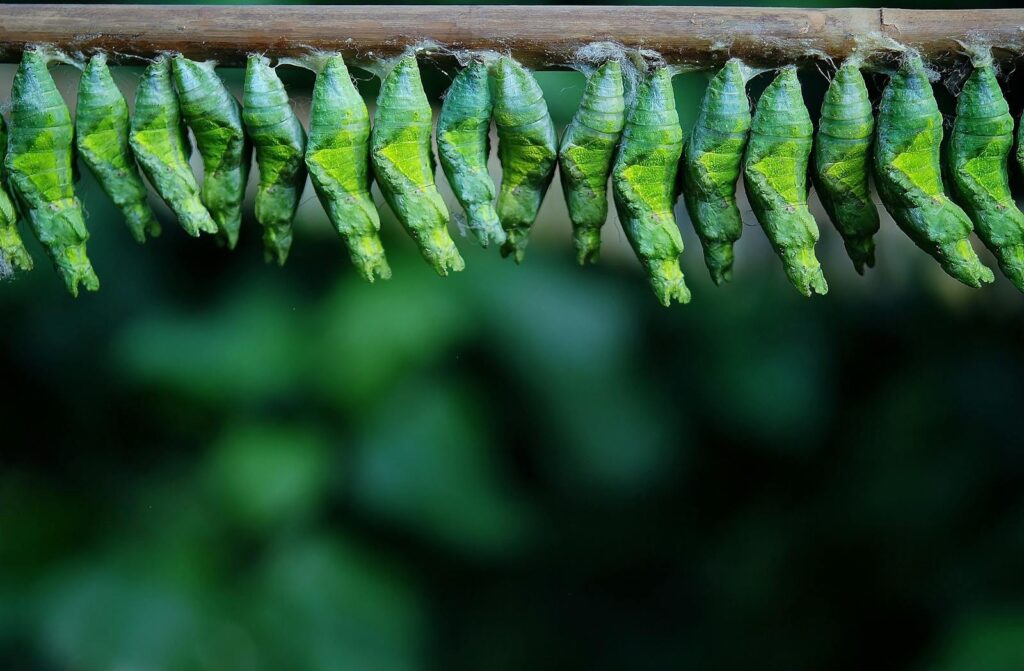
The convincing death-like state of diapausing pupae is orchestrated by a complex biochemical symphony within the insect’s body. This process begins with environmental cues triggering changes in the production of prothoracicotropic hormone (PTTH) and ecdysone, key hormones that regulate development. As these hormone levels drop, metabolic processes throughout the body begin to slow dramatically, with oxygen consumption decreasing by up to 90% in some species. Simultaneously, the insect begins producing cryoprotectant compounds like glycerol and sorbitol that prevent cellular damage during temperature extremes, essentially creating a natural antifreeze. Special stress proteins called heat shock proteins (HSPs) are upregulated to protect cellular structures during this extended period of dormancy. The combined effect of these biochemical changes creates a state of suspended animation so complete that even careful observers might mistake the pupa for dead.
The Monarch Butterfly’s Winter Sleep

The Monarch butterfly (Danaus plexippus) offers a dramatic example of pupal diapause that appears as death to the casual observer. When Monarchs pupate late in the season, their chrysalides can remain dormant for months, showing no visible signs of the extraordinary transformation occurring within. During this time, the chrysalis appears completely lifeless, with its hard exterior shell providing no indication of the internal reorganization taking place at a cellular level. What makes the Monarch’s diapause particularly remarkable is that it’s precisely timed to coincide with the butterfly’s famous migration cycle, allowing adults to emerge just when conditions favor their epic journey to overwintering grounds in Mexico or California. Interestingly, while summer generations develop from egg to adult in just 30 days, diapausing pupae can extend this period to 120 days or more, demonstrating the remarkable plasticity of their developmental timeline.
Cecropia Moths: Masters of the Winter Freeze

The Cecropia moth (Hyalophora cecropia), North America’s largest native moth, exemplifies the death-mimicking capabilities of pupating insects with particular drama. After spinning its cocoon in late summer, the Cecropia enters a diapause that will last through the entire winter, appearing completely lifeless even as temperatures drop well below freezing. During this time, the pupa becomes essentially freeze-tolerant, with special proteins preventing ice crystals from forming inside cells that would otherwise cause fatal damage. To the outside observer, the cocoon appears to contain nothing more than a dead, hardened shell, showing no response to gentle prodding or environmental changes. This convincing death act continues for approximately 9-10 months until warming spring temperatures trigger hormonal changes that reactivate development. The emergence of the spectacular adult moth with its 5-6 inch wingspan after such a prolonged period of apparent death seems nothing short of miraculous to those witnessing it.
The Desert-Dwelling Delay Artists
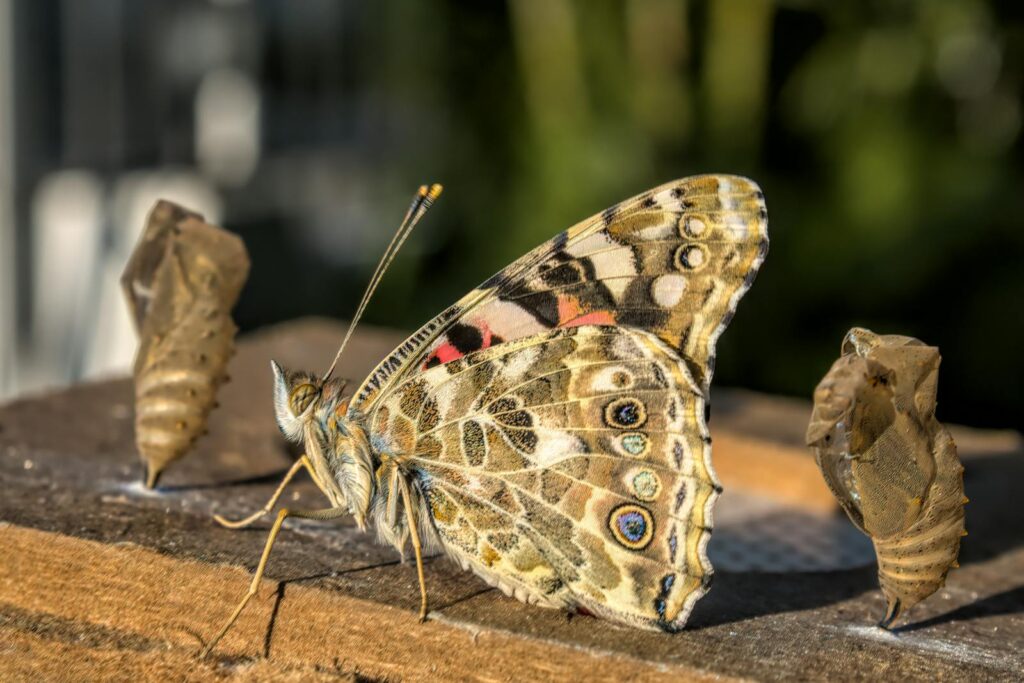
Perhaps nowhere is pupal diapause more crucial than among insects inhabiting arid environments, where prolonged dormancy can mean the difference between extinction and survival. The painted lady butterfly (Vanessa cardui), found in desert regions worldwide, has evolved the remarkable ability to remain in its chrysalis stage for months, awaiting the rare desert rains that trigger plant growth and flowering. During this extended period, the chrysalis appears completely desiccated and lifeless, effectively “playing dead” while its internal moisture is carefully conserved through specialized physiological adaptations. Some desert moth species take this strategy even further, with pupae capable of remaining dormant for several years if necessary, essentially gambling on the eventual return of favorable conditions. When rain finally arrives, these insects can detect subtle changes in humidity and temperature, triggering a rapid completion of development and emergence that coincides precisely with the brief flourishing of desert plants that will sustain the adult insects.
The Cicada’s Extended Underground Masquerade

While technically not in a pupal stage (as cicadas undergo incomplete metamorphosis), periodical cicadas provide perhaps the most dramatic example of insect developmental delay that mimics death. The famous 13 and 17-year cicadas of the genus Magicicada spend over a decade underground in a nymph stage that appears virtually lifeless to observers. During this prolonged period, the cicada nymphs move very little, growing extremely slowly while feeding on tree root fluids, with their metabolism reduced to minimal levels that border on suspended animation. This state so closely resembles death that when soil is disturbed and these nymphs are uncovered, they’re often mistaken for dead insects by those unfamiliar with their lifecycle. What makes this extended diapause even more remarkable is its precision – after 13 or 17 years underground (depending on the species), countless cicadas emerge within days of each other, demonstrating an internal biological clock of astonishing accuracy.
Environmental Triggers: Waking the “Dead”

The transition from death-like diapause to active development represents one of the most precisely timed processes in nature, triggered by specific environmental cues that have evolved to signal favorable conditions. For many species, changing day length (photoperiod) serves as the primary trigger, with photoreceptors detecting the lengthening days of spring or shortening days of autumn. Temperature plays an equally important role, with many insects requiring exposure to a specific period of cold (called “chilling requirement”) before development can resume, ensuring they don’t emerge during a temporary warm spell in winter. Humidity changes can serve as crucial awakening signals, particularly for desert-dwelling species that time their emergence to coincide with seasonal rains. Some species employ even more complex mechanisms, responding to plant chemical cues or combinations of multiple environmental factors to ensure their emergence timing is precisely matched to ecological conditions.
The Silkworm’s Commercial Importance

The domesticated silkworm (Bombyx mori) represents a case where humans have manipulated pupal diapause for commercial purposes over thousands of years. In its wild state, the silkworm moth typically undergoes diapause during unfavorable seasons, appearing completely lifeless within its valuable silk cocoon. Through selective breeding over centuries, humans have created commercial silkworm strains with various diapause characteristics to suit different production schedules and climate conditions. Some commercial strains have had their diapause capability completely eliminated, allowing for continuous silk production year-round in controlled environments. In traditional silk-producing regions, however, knowledge of how to properly store diapausing silkworm eggs (which appear completely lifeless) has been crucial to the industry, with specific temperature and humidity protocols developed to maintain viability during this death-like state. This human manipulation of silkworm diapause represents one of the oldest examples of biotechnology in human history.
Climate Change: Disrupting the Death Timers

The precisely evolved timing mechanisms that govern insect diapause are increasingly being disrupted by climate change, creating potential ecological mismatches with serious consequences. Rising temperatures can interfere with the chilling requirements many insects need to break diapause properly, sometimes causing premature emergence when food resources or mates are unavailable. Conversely, warmer temperatures might prevent some species from entering diapause at all, forcing them to remain active during periods when they would historically have been dormant, potentially exposing them to resource scarcity or temperature extremes. Changing precipitation patterns particularly affect desert-dwelling species whose diapause timing evolved to match historical rainfall patterns. Research indicates that these disruptions are already causing population declines in some insect species that rely heavily on precisely timed diapause, with potential ripple effects throughout ecosystems where these insects play key pollination or decomposition roles.
Research Applications: Learning from Nature’s Pause Button
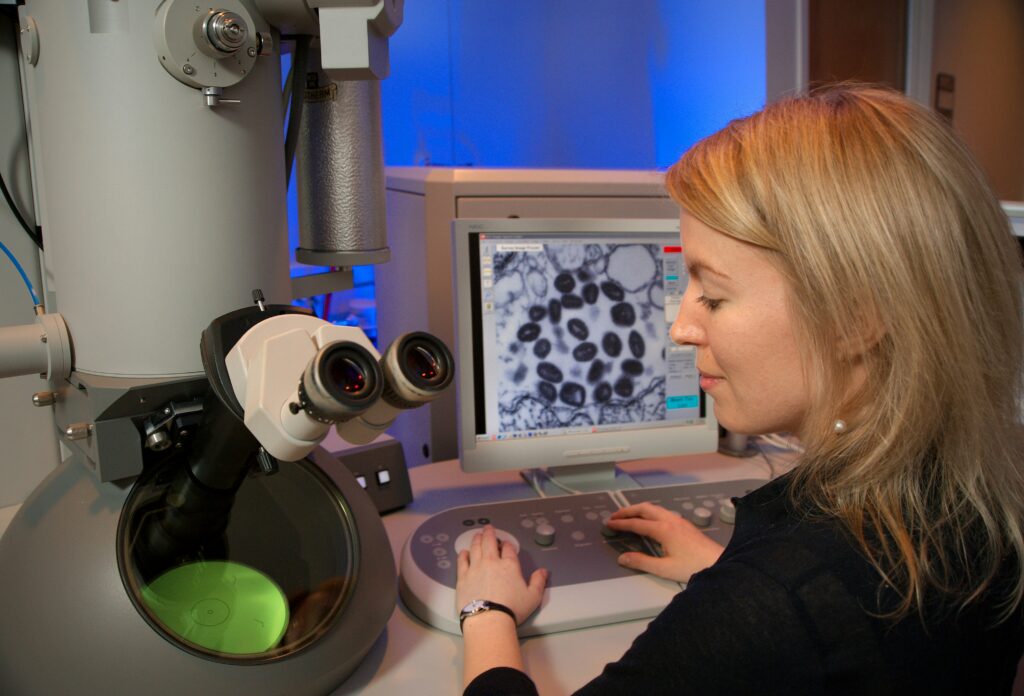
The remarkable ability of insects to enter a death-like state of suspended animation has captured the attention of researchers in fields ranging from medicine to space travel. Medical scientists are particularly interested in the cryoprotectant compounds that allow diapausing insects to survive freezing temperatures without cellular damage, hoping these might lead to improved methods for preserving human organs for transplantation. The mechanisms behind metabolic suppression during diapause offer potential insights for developing therapeutic hypothermia techniques used in treating cardiac arrest and traumatic injuries. Space agencies have studied insect diapause as a potential model for human hibernation during long-duration space missions, where putting astronauts into a state of suspended animation could reduce resource requirements and psychological stress. Agricultural researchers exploit knowledge of diapause to develop better pest management strategies, targeting vulnerable points in the diapause cycle when insects might be most susceptible to control measures.
Observing the Awakening: A Naturalist’s Guide

For nature enthusiasts, few experiences match the thrill of witnessing an insect emerge from its death-like pupal diapause. Raising moths and butterflies from collected cocoons and chrysalides offers an accessible way to observe this remarkable transformation firsthand. When collecting pupae in the wild (where permitted), naturalists should look under tree bark, in leaf litter, or buried in loose soil, depending on the species, being careful to recreate similar conditions when housing them. Patience is essential, as emergence can take months, during which time the pupa will show virtually no signs of life beyond perhaps a slight wiggle when gently touched. Environmental conditions must be carefully maintained, with appropriate temperature fluctuations that mimic natural seasonal changes. The moment of emergence, when movement suddenly begins within the previously “dead” pupa, followed by the adult insect breaking free, provides a dramatic revelation of the life that was hidden within the seemingly lifeless shell all along.
Cultural Symbolism: Death and Rebirth

The apparent death and dramatic rebirth exhibited by diapausing insects has served as a powerful metaphor in various cultural and religious traditions throughout human history. Ancient Egyptian mythology incorporated the transformation of scarab beetles in religious symbolism related to death and rebirth, with scarab amulets commonly placed with mummies. Greek mythology featured the story of Psyche, whose name means both “soul” and “butterfly,” drawing explicit connections between metamorphosis and spiritual transformation. Native American traditions across multiple tribes incorporated butterfly and moth emergence in their spiritual practices, viewing the transformation from apparent death to new life as a reflection of human spiritual journeys. In modern Western culture, butterfly emergence from chrysalides continues to serve as a popular metaphor for personal transformation and resilience, appearing frequently in literature, art, and psychological frameworks. These cultural interpretations reflect humanity’s enduring fascination with insects’ ability to convincingly mimic death before their dramatic renewal.
Conclusion
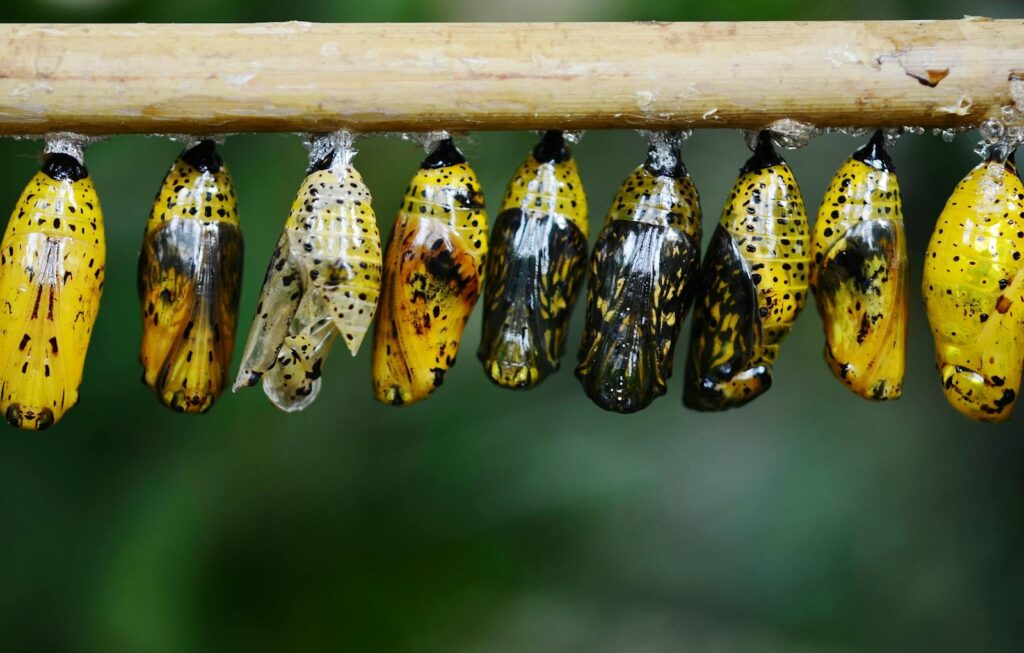
The remarkable ability of certain insect pupae to enter extended periods of dormancy that mimic death represents one of nature’s most sophisticated survival strategies. Through complex physiological adaptations, these insects effectively pause their development for months or even years, waiting for optimal conditions before completing their transformation. This adaptation allows them to survive environmental extremes, avoid predators, and synchronize their emergence with favorable conditions. As climate change increasingly disrupts the delicate timing mechanisms that govern these processes, understanding pupal diapause takes on new urgency for conservation efforts. Meanwhile, the fundamental biological mechanisms behind this convincing death act continue to inspire researchers across disciplines, from medicine to space exploration. For the casual observer lucky enough to witness an insect emerging from its death-like state, the experience offers a profound reminder of nature’s resilience and the remarkable strategies living organisms have evolved to survive and thrive in our ever-changing world.

